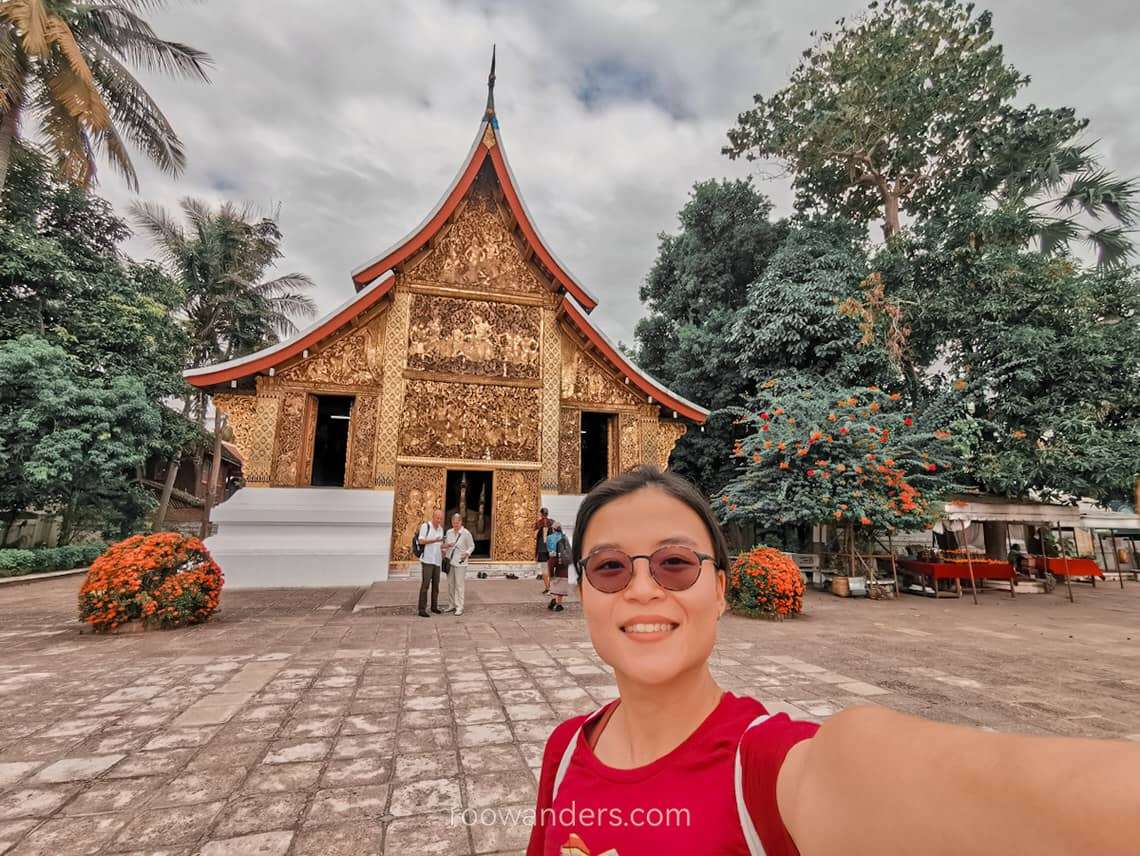
Travelling in Laos Guide for Beginners
Sai Bai Dee from Laos – my 42nd country and last country in Southeast Asia north of Singapore.
Visiting Laos has been a part of my plan since 2018, but somehow didn’t materialise until 2023 – 5 years later!
Having been to its neighbouring countries of Vietnam, Thailand, Cambodia and China – I visited Shangri La! – I could attest that this country is very safe for solo female travellers, with tons of activities to do. Everyone’s polite and friendly, and it is still relatively less visited than the other SEA countries.
Thinking of visiting Laos soon? Here’s what to expect!
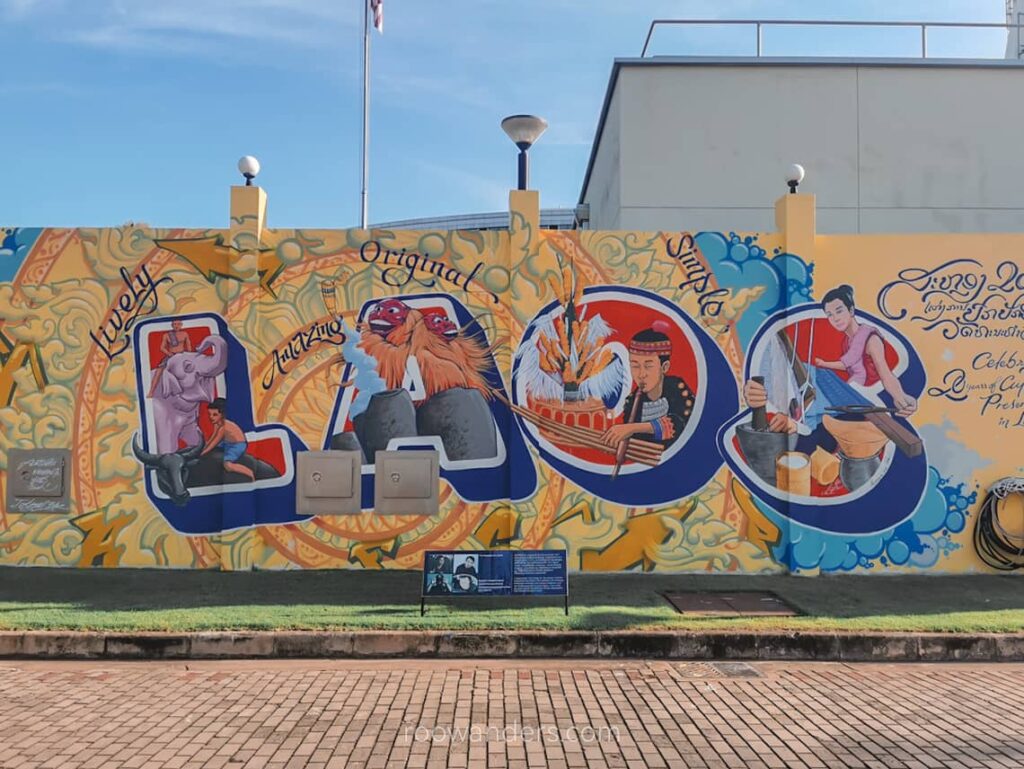
I visited Northern Laos in Nov 2023. In case you’re wondering, what’s missing now are Brunei and Timor Leste to complete the SEA countries. I almost visited Brunei when I was in Miri in July 2022, but the country was still closed due to the pandemic. This post contains affiliate links that cost nothing to you but support my blog! It may also be updated periodically. Cheers!
Immigration Matters
Visa
As a citizen of a member country in ASEAN, I am exempted from a visa, since Laos is also a member state. Citizens from Brunei, Cambodia, Indonesia, Malaysia, Myanmar, Philippines, Singapore, Thailand, and Vietnam have a maximum of 30 days of visa-free entry in Laos.
Apart from that, countries like Japan, South Korea, Switzerland, Luxembourg, Russia and Mongolia also enjoy visa-free entry of 15 or 21 days.
For the rest, you could apply for a Visa on Arrival at the entry ports or online here at the official website. Have some spare passport photos, proof of accommodation and a US$ 50 ready for the visa. An outward-bound ticket may be needed. The visa grants 30 days of travel within the country.
Entry and Exit form
Just to point out, everyone needs to fill in a long sheet of paper consisting of two parts indicating your entry and exit points. Details include passport information, accommodation and transport number.
Hand in the entry portion during immigration, and keep the exit portion with you until your departure. Both portions have the same unique ID. I’m not sure what might happen if you lose your exit form, though some say that filling in another blank exit card would do the trick.
Travelling into Laos
Laos is a landlocked country surrounded by Kunming, China, and Myanmar at the north, Vietnam at the east, Thailand at the west, and Cambodia at the south. The longest river in Southeast Asia – the Mekong River – flows through all six countries, resulting in a variety of transport options.
Flight
Most international travellers would have flown into the country. For those in Singapore, there are direct flights by Scoot three times a week into Vientiane. I flew in and out of the country on Saturdays. Other budget options include changing flights to Bangkok and taking Air Asia into Luang Prabang.
Most international travellers would have flown into Wattay International Airport in the capital Vientiane, Luang Prabang International Airport in the northernmost part of Laos, or Pakse International Airport in the southern part of Laos.
Check for your best flights into Laos here.
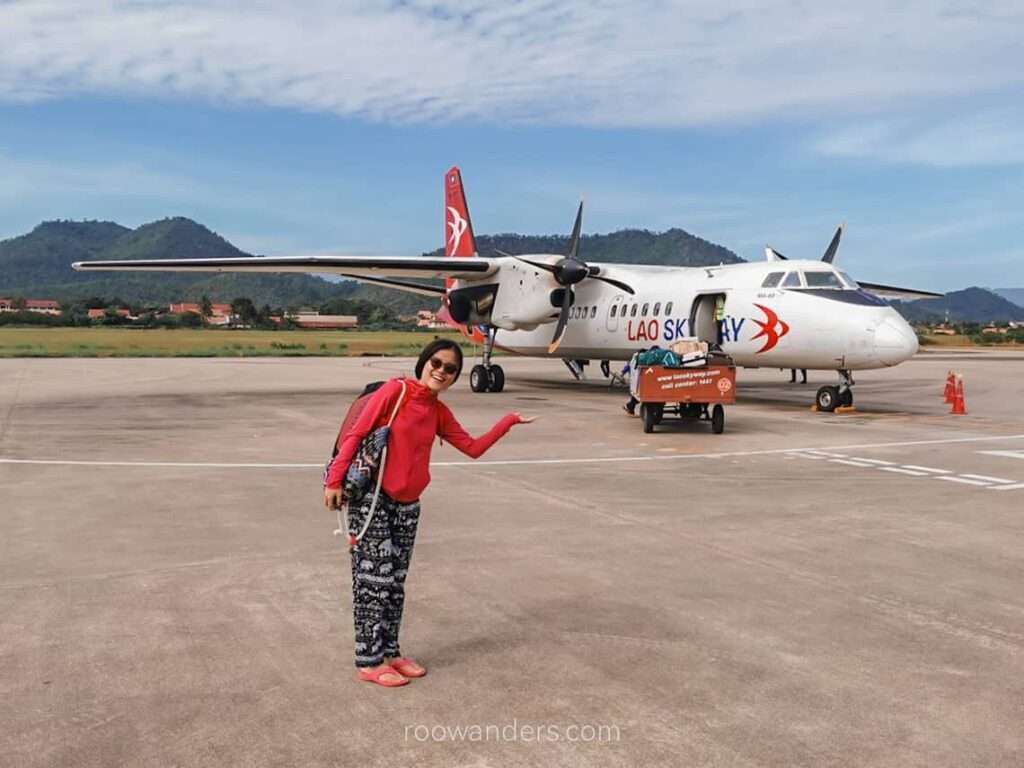
Slowboat
Another popular mode of transport is the 2D1N slow boat from Thailand to Laos. There are tour operators who could arrange for a hassle-free way of travelling via the slow boat from Chiang Mai, Chiang Rai, or Pai to stops between Huay Xai and Luang Prabang in Laos.
This is definitely on my cards soon.
Bus
If you’d like to stretch your money, there are plenty of cross-country sleeper buses into and out of Laos. Note that the journey could be long and arduous.
Most accommodations, at least in my hostel, can arrange bus tickets. You could also purchase them online from 12Go.
Train
You could cross over from Kunming, China, to Laos, or vice versa, via the Laos-China Railway. Travelling via train into and within Laos is the most comfortable and fastest way to travel, but getting a ticket independently can be a chore. That’s why most travellers still buy from 12Go.
There’s also a sleeper train from Bangkok, Thailand, to Laos via the Friendship Bridge over the Mekong River. I’ve never taken a sleeper train in Thailand, but it may be similar to the sleeper I took in Vietnam on the Reunification Express Line.
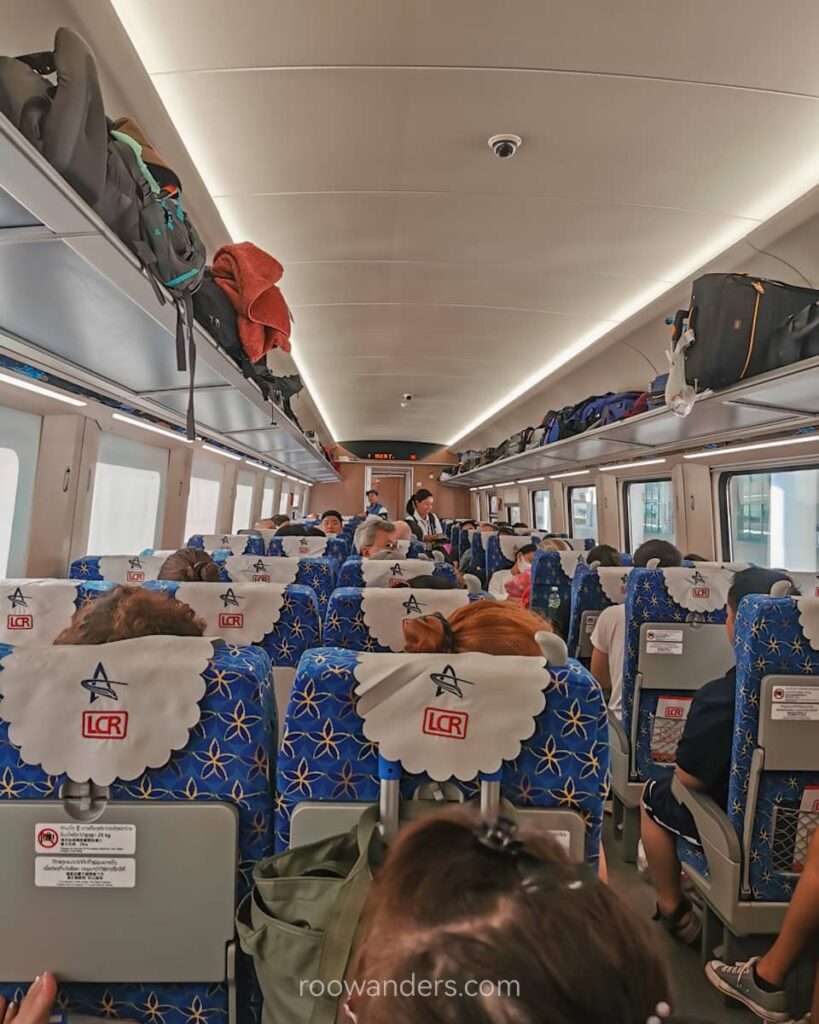
Best Time to Visit
The dry and cool months of November to January are generally the best period to travel in Laos. Daytime temperatures are agreeable, though early mornings and late nights can be a little chilly. I visited in the middle of November for a week and encountered only one sudden downpour in Luang Prabang. This is the best time for a guided hike – some areas may still contain unexploded bombies, more about this in another post – in the forest of northern Laos.
Expect heavy rainfall from June to October. Travelling during the peak rainy season can be hazardous or even impossible with road closures and floods. Even if you were to get to your destination, certain attractions may be closed – for instance, the wet cave of Vang Vieng. In exchange for the wetness, you’d get roaring waterfalls and full rivers.
The period between March and May coincided with the country’s slash-and-burn season. You’d have acrid smog everywhere that paints the sky a dusty orange, and fill your clothes and hair with particles and a lingering burnt smell. A friend of mine visited in April 2023 and had to wear a mask throughout her trip.
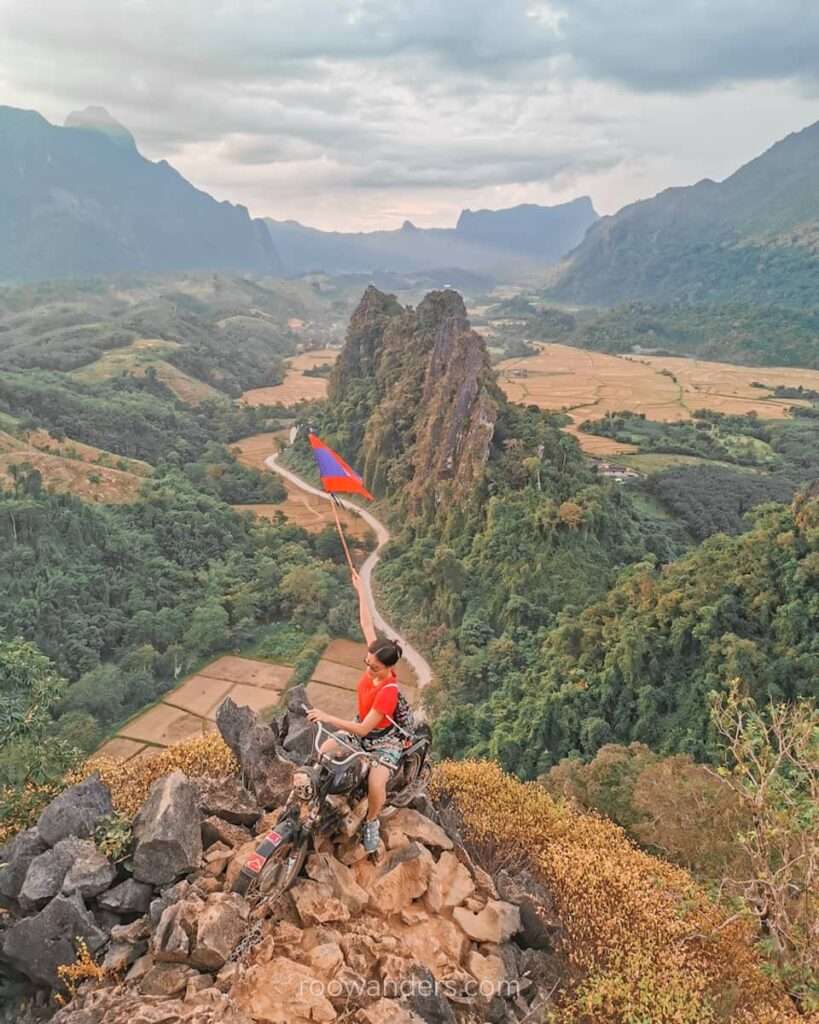
Administrative Matters
Money
Cash is king in Laos. Clean and crisp USD, and occasionally the Thai Baht, are accepted in most establishments, but the Laotian kip is still the preferred way to go. Some places with tourist presence accept cards, but cards incur additional charges.
You could draw your cash in all ATMs. The best rates are usually at the airport. Maximum cash per withdrawal is 2500k kip for BCEL, with another 20k to 30k kip transaction fee. My cash withdrawal using YouTrip totalled up to S$165 at Wattay International Airport (Nov 2023).
I tried to draw my cash using Trust from BCEL, but it didn’t work. In the end, I had to go with YouTrip. Trust works as a credit card with no cash withdrawal or forex charges, while YouTrip works as a prepaid card and free cash withdrawal for the first S$400 of the month. If you haven’t had a Trust or YouTrip card yet, do me a favour and sign up with me under codes SURW9MK5 (download the Trust app for iOS or android) and here (Youtrip).
Laotian Kip is nearly worthless beyond its borders, so make sure you use them all before leaving.
Data and SIM
For those coming from Singapore, telcos like Simba with its 1 GB free roaming work. APAC pack for Giga does not.
There’s wifi in all touristy places, but don’t expect the local noodles shop to have one.
Buying a SIM card is easy, and the cost is very low. My 5 GB data package SIM for 10 days cost a mere 30k kip at Wattay International Airport.
Having a Laotian SIM works wonders, as you can now use your Laos number to create accounts for ride-hailing, other transport, and most importantly, the frustrating Lao-China Railway app. To check your data balance, dial *123#.
If you must have an esim prepared before your trip, or worried that the shop might not be open when you’re in the airport/ port, you can order one here for a relatively affordable price.
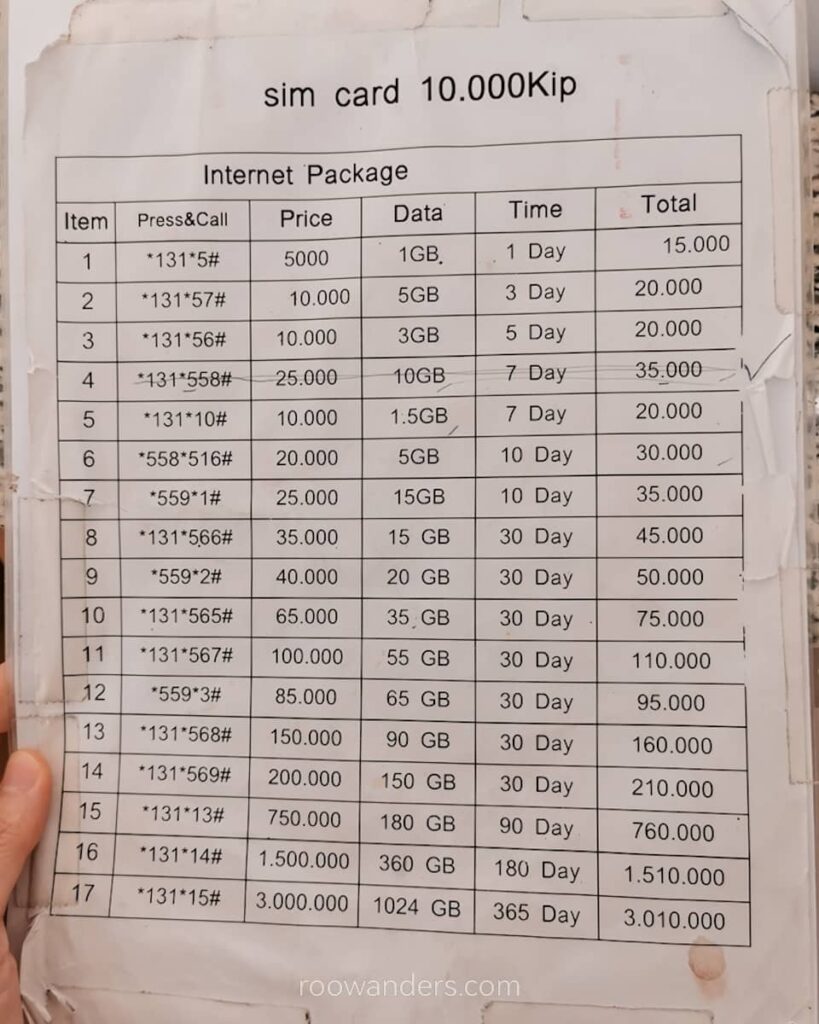
Travelling within Laos
Walking
I walked everywhere within Vientiane and Luang Prabang to get to the sights and eateries. Unlike the roads of Thailand or Vietnam, Laotians do not honk all the time, and there are proper pedestrian crossings.
Ride Hailing/ Taxi
Loca, a Thai-owned company, is like the Grab of Laos. You could use the app for payments, order takeaways, and call for a ride. However, this service is still predominantly used only in Vientiane and Luang Prabang. I accumulated enough points from two Loca rides to exchange for a free iced Americano in a partnering cafe.
Xanh SM is another new ride-hailing contender. Unlike Loca, Xanh SM owns its fleet of cyan taxis. The VinFast electric cars are new, quiet and travel smoothly within Vientiane. As my visit coincided with the month of their launch, we enjoyed one free ride on the first weekend, and two 50% off rides on the following weekend. They accept cash only.
Make sure you download their apps and create an account for each before using them, as this process takes time.
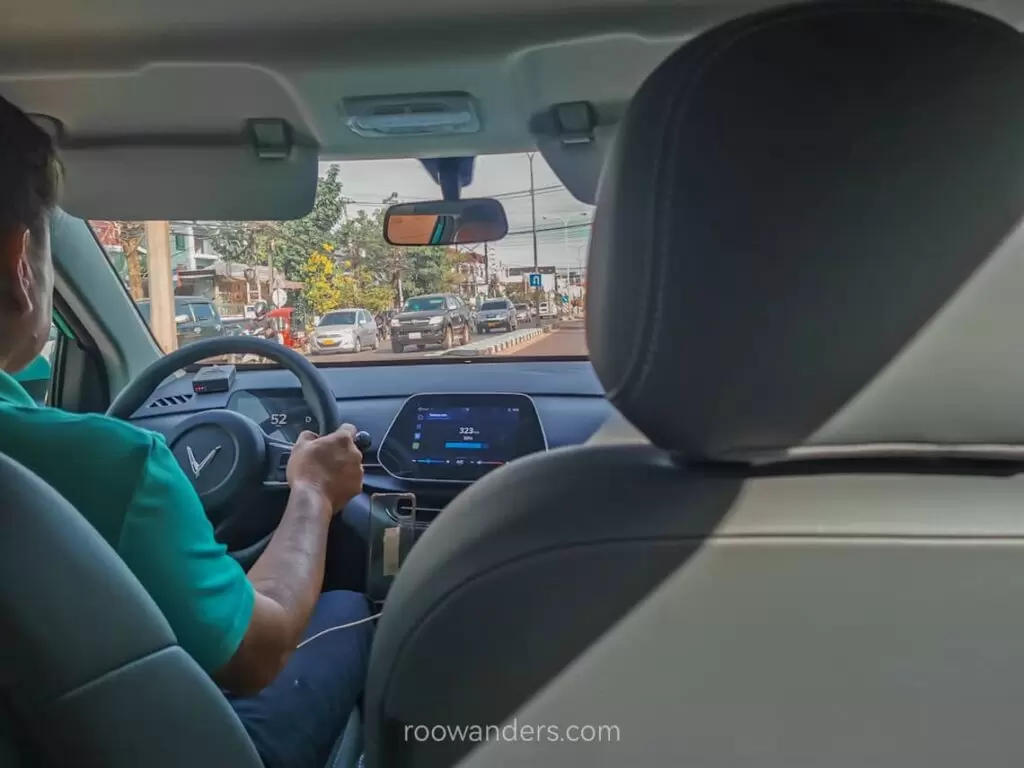
Tuktuk
If you’re travelling in a larger group, consider hiring a tuk-tuk. Depending on their size, a tuk-tuk can carry a max of three or 10 individuals.
I’ve taken the tuk-tuk thrice during my week-long trip – from Vang Vieng Railway Station to Vang Vieng for 30k kip, and vice versa, and from Luang Prabang Railway Station to Luang Prabang for 40k kip.
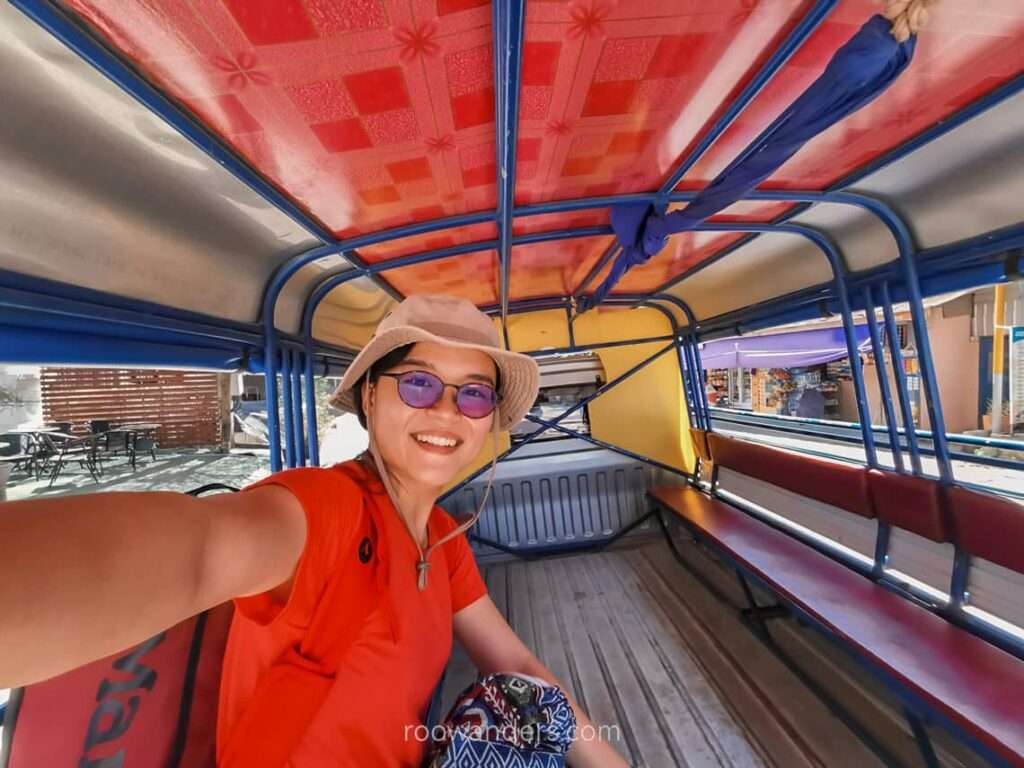
Motorbike
Riding a motorbike in Laos gives you ultimate freedom. Plus, they’re not that expensive, with rates going from 120k kip to 150k kip per day.
Too bad for me, I have no knowledge, no licence and no courage. Lucky for me, I found another traveller with an international licence and sufficient know-how on Southeast Asian battered roads. We covered an extensive distance with the bike in the outskirts of Vang Vieng and Luang Prabang.
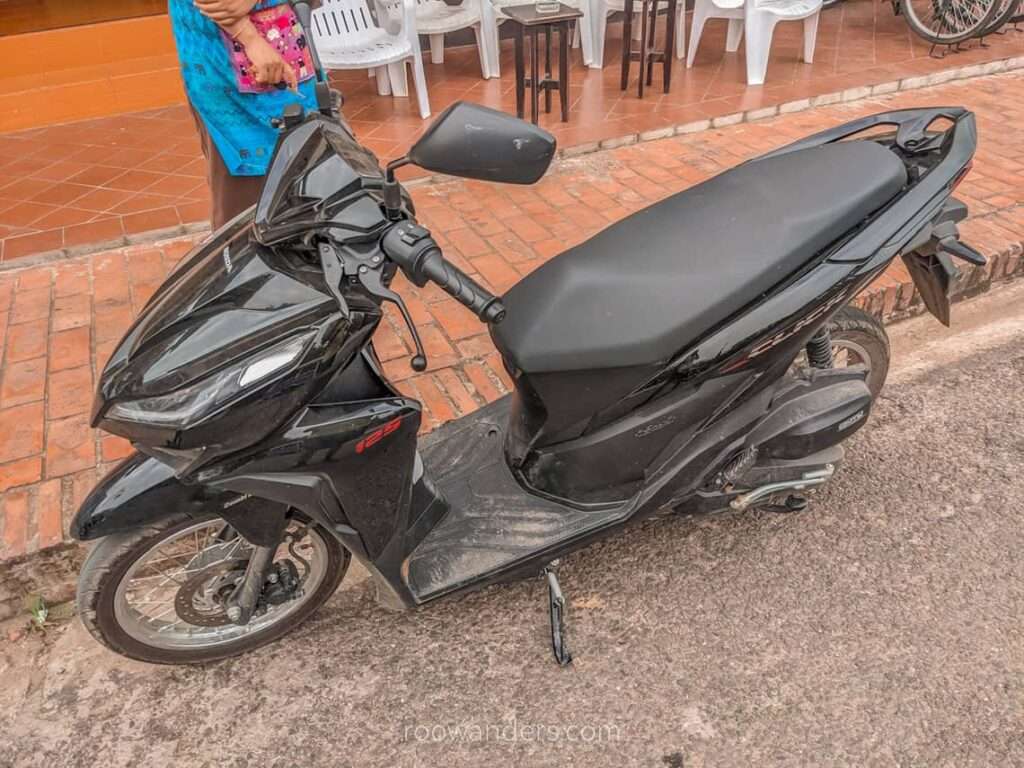
Bicycle
For those without a motorbike licence, fret not. You could rent a bicycle. Make sure you get yourself a mountain bike for the rough roads. There’s also the option of electric bikes.
What to Wear
If you haven’t known yet, Laos is a Buddhist country with so many temples and Buddhas you could get temple fatigue.
Dress conservatively and modestly, covering your knees, shoulders and chest when visiting religious sites. You may wear bikinis for blue lagoons and the waterfalls, but remember to change back before leaving the park.
Key places to visit
Here’s a brief summary of what to expect in the key places of attraction.
- Vientiane. The capital city of Laos has temples, a grand monument with a fountain called Patuxai, and a COPE visitor centre. A place where most international travellers would land via flight if not Luang Prabang.
- Vang Vieng. The next natural spot to visit from Vientiane for those on a classic week-long trip. Many imposing karsts and caves. Home to adventurers. You could paramotor or ride a hot air balloon here.
- Luang Prabang. Used to be the royal capital of the country. Many old temples date back to the 16th century. Beautiful street houses facing the river. A perfect base to launch into hikes around Northern Laos.
- Luang Namtha. A trekking destination. For those looking for an even more laid-back countryside vibe.
- Nong Khiaw. Another spot for adventure seekers. Offers opportunities to rock-climb, kayak and trek.
- Phonsavan. For the mysterious millennia-old Plains of Jars sites.
- Thakhek. There’s an adventurous 500 km loop through the countryside with the Kong Lor Cave as a key highlight of the 4 – 6 days trip.
- Pakse. Has an international airport, and another exciting 300 km loop peppered with numerous waterfalls known as The Bolaven Plateau Loop.
- Si Phan Don (4000 islands). A laid-back little town with numerous waterfalls. Spot the elusive freshwater Irrawaddy dolphins!
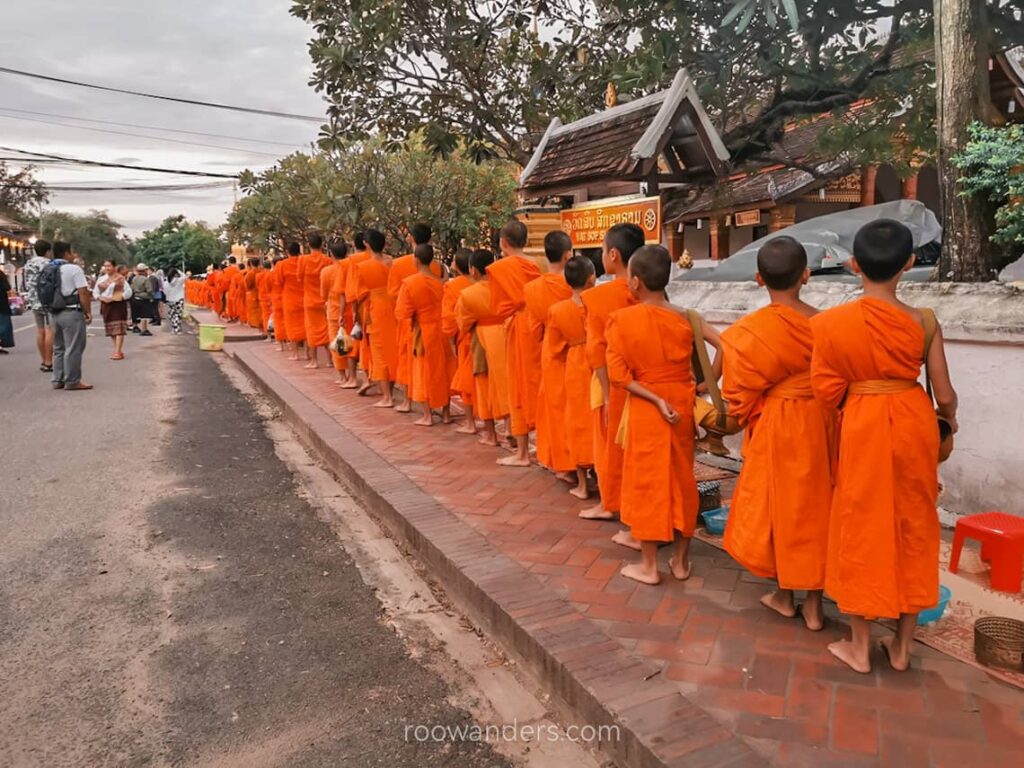
Food to try
For me, Laotian cuisine is like a little bit of Vietnamese and Thai food. No surprise since they’re neighbours.
There are lots of noodles, rice dishes, and baguette sandwiches. Thai food tends to be more intense (spicier/ sweeter/ more sour), while Vietnamese food is more bland in comparison. All are still tasty.
Here’s what I had in Laos. Bear in mind I’m a soup and noodles lover, so my list tunes towards that.
- Khao Piak. Chewy rice noodles in starchy soup. You could choose to top it with meat. Comes with a serving of raw vegetables and herbs, shrimp peanut concoction dipping sauce and lime. Similar to pho, but the chewy rice noodles are a phenomenon, and can only be found in Laos, at least in my travels.
- Khao Soi. Soupy rice noodles delight served with fermented soybean paste mixed with crushed tomatoes. Might be a little spicy.
- Pho. Similar to Vietnamese pho.
- Noodle Soup. Could be rice noodles or yellow noodles. With different meaty toppings to go with. Usually served with a small plate of bean sprouts and lime. Similar to the noodle soup I have in Singapore.
- Khao Piak Khao Gai. Soupy porridge. Had it for breakfast. Comes with an egg and slivers of chicken.
- Laap. Stir fry minced meat – either beef, pork, chicken or fish – with loads of basil and herbs. Eaten with rice.
- Or Lam. A very hearty thick stew originating from Luang Prabang that is mildly spicy and contains a variety of herbs like lemongrass, citronella, Lao chilli wood, garlic and dill, chunks of meat and sticky rice.
- Crispy Mekong fish. Mekong fish – likely the catfish – fried to crispy perfection to go with chilli dipping sauce.
- Kaipen. Seasoned and deep-fried river weed. Delicious when paired with chilli dips.
- Naem. Fermented pork dish. It’s made from a porky mixture that’s been steamed and then hung under the sun for 1 – 2 days.
- Larb Pla Meuk. I had this for my first meal in Vientiane at a night market. BBQ squid paired with lots of herbs and spicy savoury sauce. You could find this dish in Thailand too.
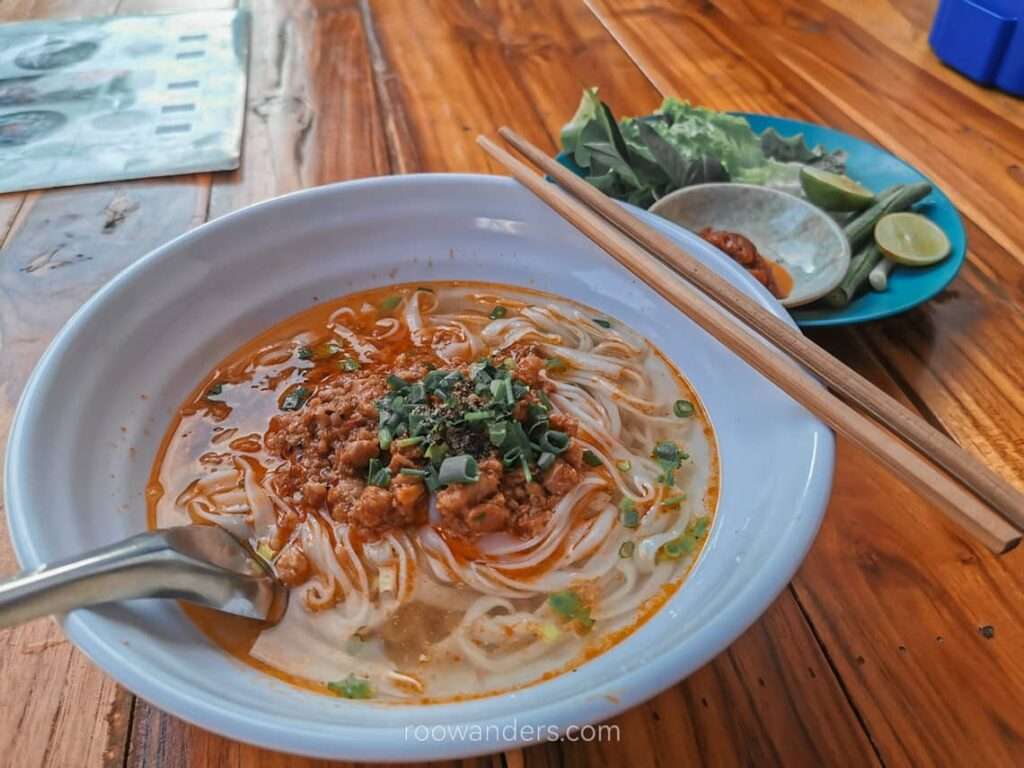
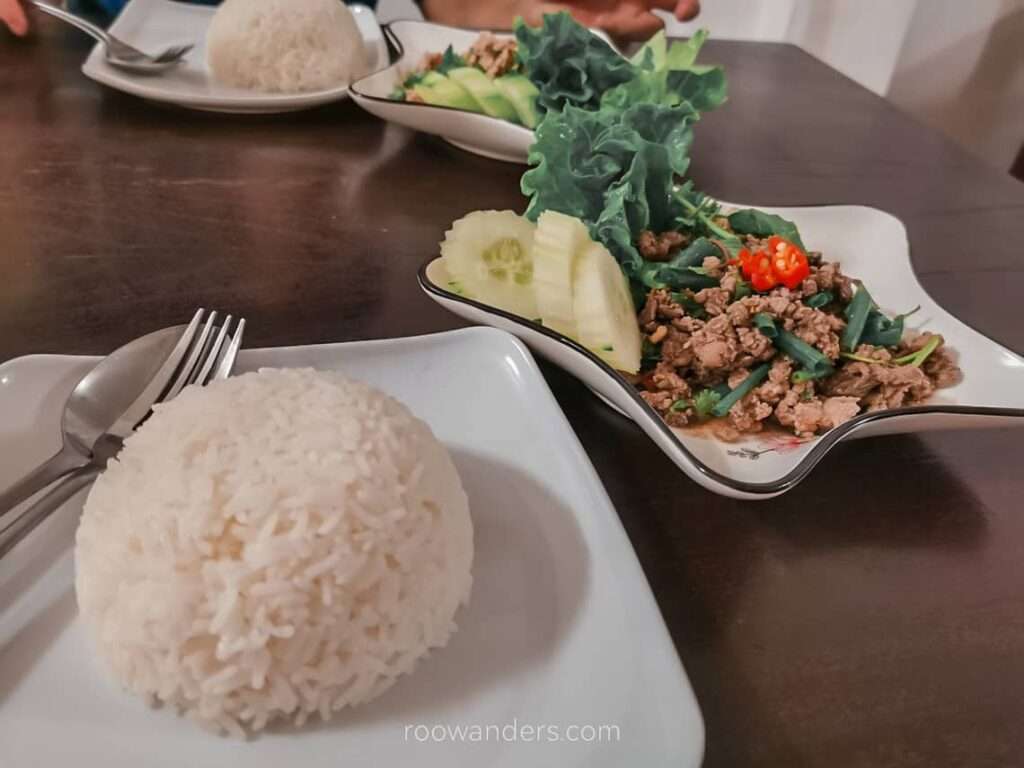
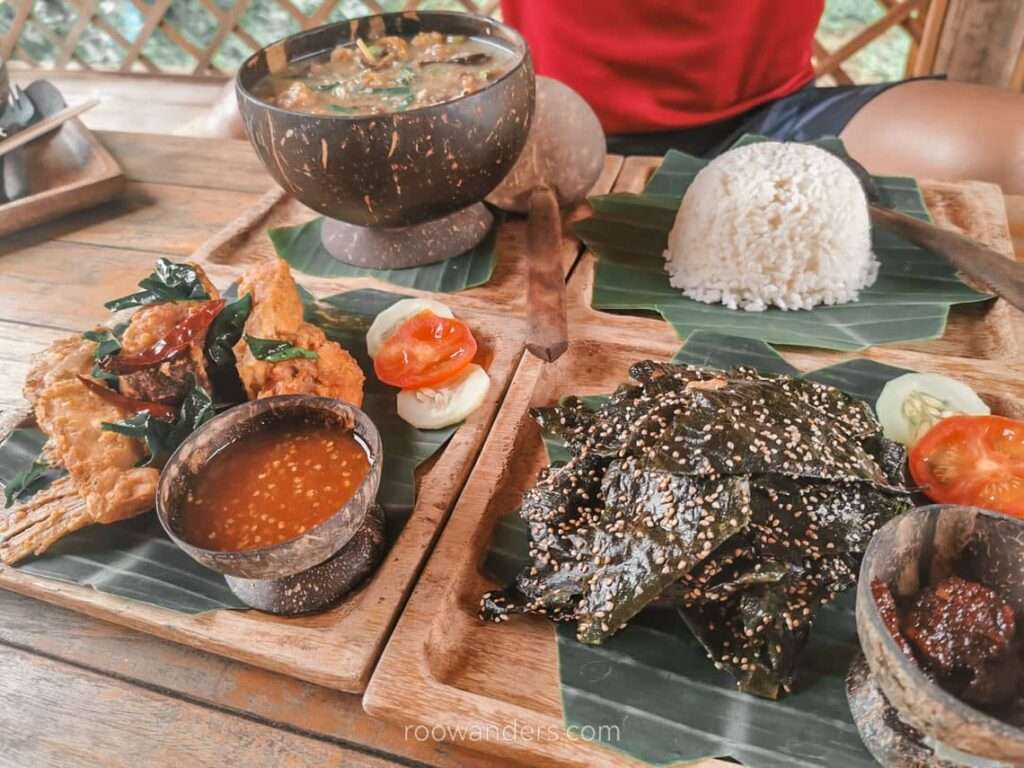
There’s more to the list that I did not get to try:
- Ping Hua Jai Kai. Grilled chicken hearts threaded on a stick.
- Naem Khao. Crispy deep-fried rice with pork, dried coconut and herbs.
- Sai Oua. Herbal Pork Sausages. Sausages made with loads of herbs and pork.
- Khao Jee Pate. Similar to the Banh Mi in Vietnam, and Num Pang in Cambodia.
Phrases to Remember
Lao sounds and looks similar to Thai. I’ve learnt to recognise the Thai numerals and certain useful phrases and found them handy in Laos. Use some basic Lao with the locals to break the ice and infuse some friendliness. If not, English and body language can still get you across.
Here are some useful phrases to help in your visit:
- Sai Bai Dee. Hello.
- La Kone. Goodbye.
- Khop Jai. Thank you. Add Lai Lai or Deu at the back to signify very much.
- Doi/ Bow. Doi means yes, and Bow means no.
- Khaw Toot. Sounds like Khor Thot in Thai, which means Excuse me, or I’m sorry.
- Baw Pen Nyang. Similar to Mai Pen Rai in Thai. Essentially, no worries.
- Soon. Zero.
- Neung. One.
- Song. Two.
- Saam. Three.
- See. Four.
- Ha. Five.
- Hok. Six.
- Jet. Seven.
- Pet. Eight.
- Kao. Nine.
- Sip. Ten.
- Phan. Thousand.
- Meng. Ten thousand.
My One Week Itinerary
If you have only a week to spare – like me – and this is your first time travelling in Laos, focus your travel on the conventional Vientiane, Vang Vieng and Luang Prabang belt. Those looking to skip the temples could look into setting Luang Prabang as the base to get to hiking spots further north.
A summary of my itinerary below.
Day 1: Land in Vientiane. I landed late and toured the night market and vicinity.
Day 2: Vientiane to Vang Vieng. Toured Vientiane by foot before taking the mid-morning train to Vang Vieng. Rented a motorbike with a travel buddy to Tham Chang Cave, Nam Xay Viewpoint, Tham Poukham Cave and the Blue Lagoon.
Day 3: Vang Vieng. My travel buddy went for an early morning hot air balloon. We then rented a motorbike to visit the cluster of caves north of Vang Vieng (tubing into the Water Cave, trekking into Loup and Hoi Cave), and an elephant sanctuary. You could sign up for a tour that includes all those plus kayaking and zipline.
Day 4: Vang Vieng to Luang Prabang. Took the train to Luang Prabang, explored some temples, the royal palace-now-museum, and UXO museum, had coffee in a cafe, climbed Phousi Hill for sunset, and listened to Laotian folktales.
Day 5: Luang Prabang. Rented a motorbike to tour Pak Ou Caves and Tad Sae waterfall.
Day 6: Luang Prabang. Travelled to Kuang Si Waterfall, Buffalo Farm and had lunch at a rice plantation.
Day 7: Luang Prabang to Vientiane. Woke up early to spectate the alms, followed by another hike to Phousi Hill to catch the sunrise. Flew back to Vientiane in the afternoon, and caught the fountain show at Patuxai.
Day 8: Fly out of Vientiane. Rounded up the remaining attractions in Vientiane including COPE visitor centre and Pha That Luang. Flew out in the late afternoon.

Conclusion
Laos is a delightful place to travel. While each of the Southeast Asian countries has its unique appeal, I found Laos – at least the places I’ve visited – less busy and practises a slower pace of life. And that was a nice contrast to the most hectic Southeast Asian country I came from!
This post serves as a tidbit and guide on what to expect for a Laos adventure. I expect myself to return to Laos again in the future, perhaps via the slow boat from Thailand to trek, and maybe another trip for the loops in the south. Till then! ✨





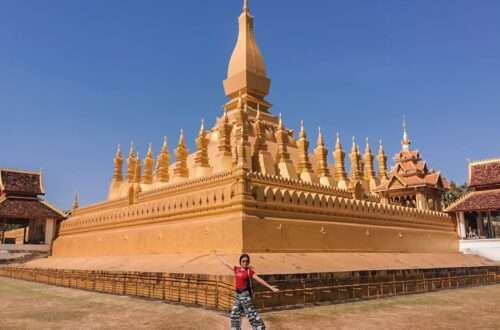
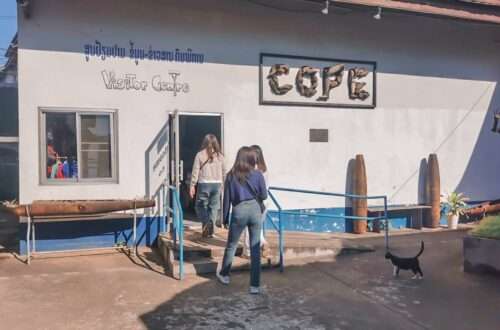
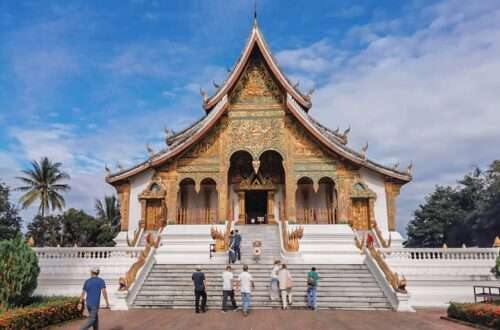
2 Comments
Sharon Levy
I loved your guide and thank you so much for sharing from your experience, wishing you all the best dear
Roo
Lovely to hear from you Sharon! All the best in your travels! <3